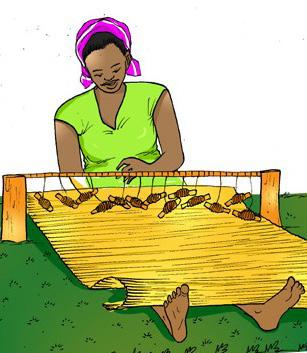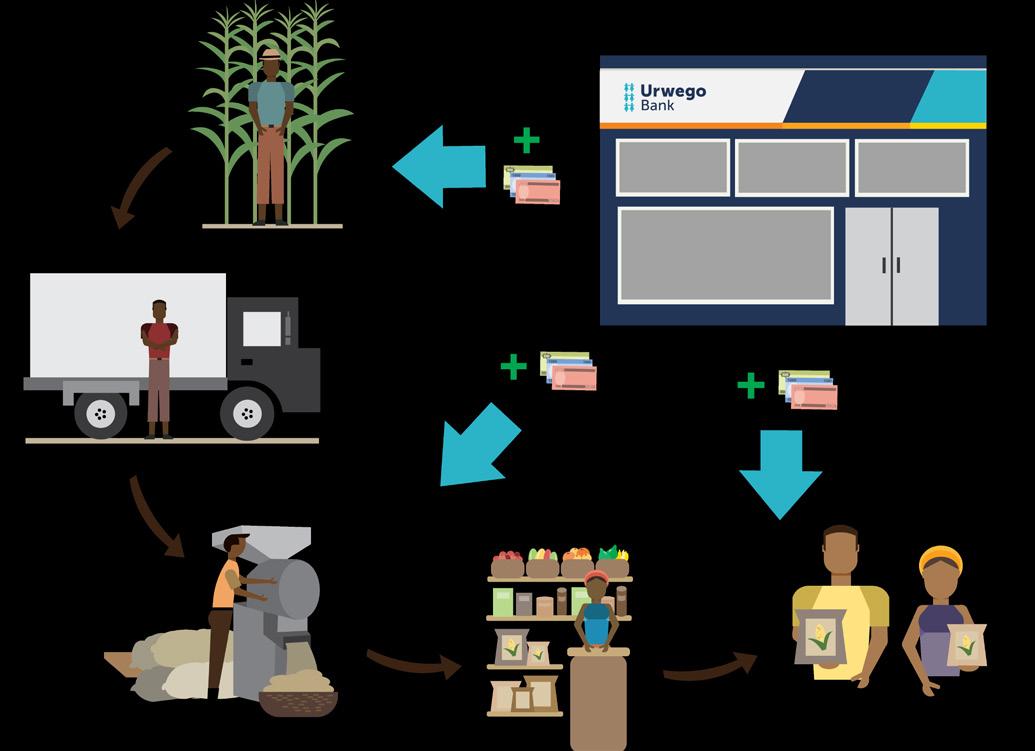
3 minute read
Lesson 3. Preparing your product
Anchor scripture:
• Proverbs 16:3: Commit to the LORD whatever you do, and he will establish your plans.
Advertisement
Specific training objectives: By the end of this session, participants will be able to: • Recognize the factors to consider when preparing a product • Know the importance of value addition • Understand how a business interacts with actors in its network
When we are in business, we all have something we are selling. It could be a tangible product, or a service. When we are trying to sell to customers, we want to ensure that we have a quality product that customers are interested in buying. Factors to consider as you prepare your product • Product kinds: Is it perishable – under what conditions should it be stored? e.g. tomatoes, cabbage • Have you followed all the requirements – permits, certification, hygiene practices, labelling? • What is the full cost of production: adding labour, raw materials, transport? • How does it compare with your competition in quantity, quality, and price? • Who are your customers? What do they want? • What value has been added to the product?
Adding value
Ushaka inka aryama nkazo - He who wants more profits works harder Adding value refers to improvement of the product/service. A value-added product or service aims at giving more satisfaction to the customers and therefore the customer is willing to pay more for it. The purpose of value addition to the business is to earn more money while improving and increasing the customer’s satisfaction. Adding value is very important step in any business since the goal is
to make the product/service worth more to the customer. (Illustrate with process of making mats from straw)
Exercise: Show the participants the illustration “from grass to basket(Agaseke)”. Ask them to discuss what is happening in the picture by posing the following questions: # How much would you be willing to pay for the grass and why? # How much would you be willing to pay for the basket and why? Ask them to compare the price of the straw and that of the mat, then ask “by how much did its value increase?”
Balancing the business network
A business person does not just come up with a product. He/she operates within a network consisting of suppliers, financiers, customers, workers, and family who contribute to the preparation of the product in various ways. These are the other actors in the business network. (Illustrate flow of relationships between trader and supplier, workers, family, customers and financier)
EXPLANATION
• The main duty of the business owner is to ensure all business activities are done as required and profit is made. • The process of running the business requires the business owner to relate


with other people who have a role in the success of the business.
• These people form the BUSINESS NETWORK

ROLE PLAY
Ask the participants to form groups. Taking the example of a maize seller, ask them to make a small role play that demonstrates the way the business person relates with one of the following members of his business network, and how the maize seller can add value through each of these relationships: A. Supplier B. financier C. customer D. workers
E. family • Give each group a short time to present their role play and for the class to discuss and list what comes out. • Take them through the list of pressure/ challenges of the businessman selected in the role plays and ask them to suggest the possible ways of managing them. • Have participants discuss various value addition methods to enable the maize seller to earn more money. • Summarize the main points raised by the roleplay at the end of the activity.
Key learning points
• Value addition makes the product/service more satisfying for the customers and brings more income to the business • Business management involves managing the expectation of your business relationship partners also referred to as the business network.









